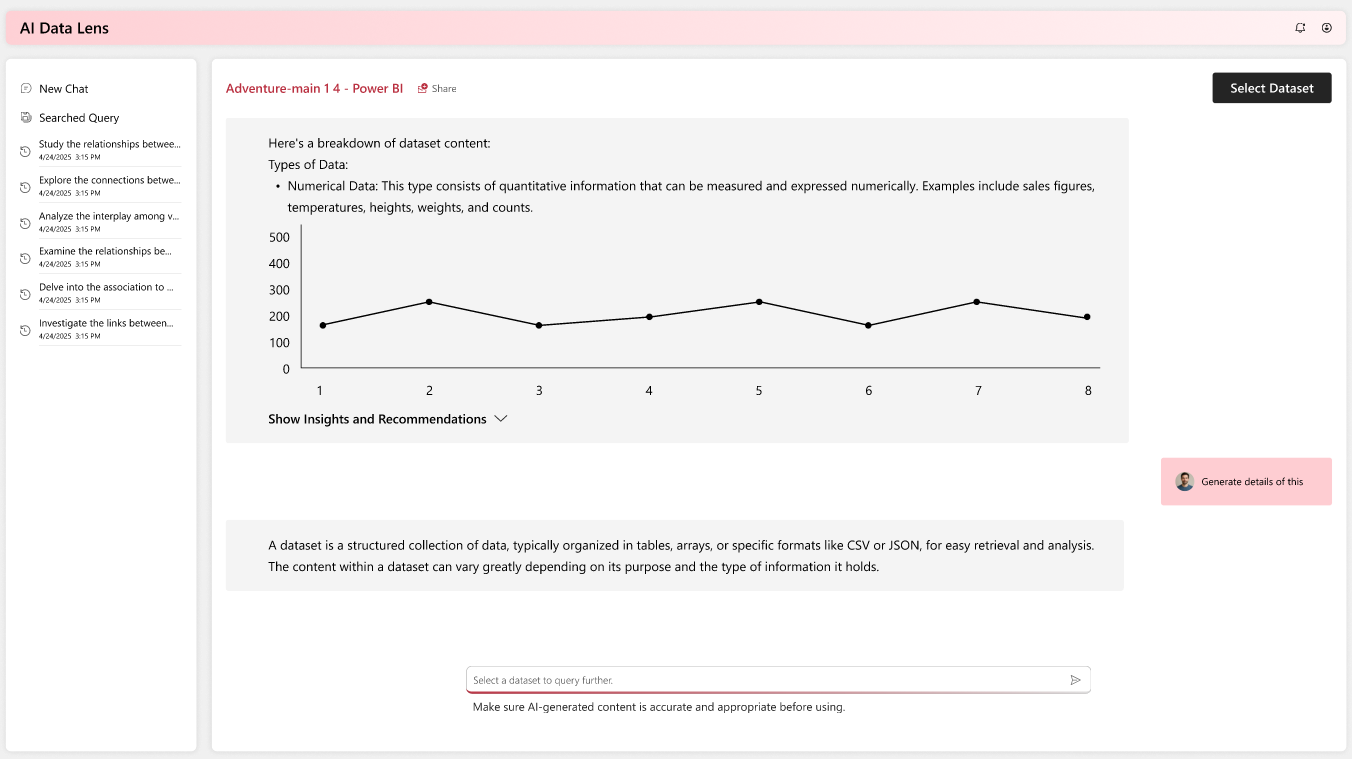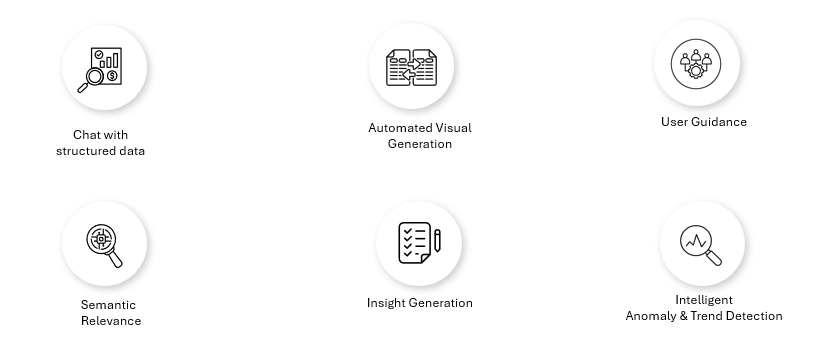In today’s data-driven world, organizations often struggle to make sense of business analytics reports or structured data trapped behind technical interfaces. Business users rely heavily on analysts or IT teams to extract insights, leading to delays, misinterpretations, and bottlenecks. AI-DataLens bridges this gap, transforming how users interact with data by enabling natural language queries and delivering instant, intelligent insights.
Technical barriers to data insights
Most analytics tools, while powerful, require users to have expertise in SQL, DAX, or other complex query languages. As a result:
· Business users cannot independently extract insights.
·
Data remains underutilized.
·
Time-to-insight is slow.
AI-DataLens is a solution that democratizes data access.
| Figure 1: User interface |
Key features
· Chat with structured data: AI-DataLens allows users to interact with enterprise datasets using natural language. No need for SQL or DAX—just ask questions and get instant answers.
·
User guidance: Delivers intelligent question suggestions and personalized investigative recommendations to help new users effectively explore and understand their data from the very beginning.
·
Semantic relevance: Understands the true intent behind user questions by analyzing metadata and context, ensuring accurate and meaningful responses.
· Automated visual generation: Automatically generates relevant charts and visuals from user queries. This eliminates manual effort and helps users quickly interpret the data visually.
·
Insight generation: Beyond raw data, the system generates narratives, titles, and summaries to present insights in a business-friendly format for decision-making and provides recommendations.
·
Intelligent anomaly & trend detection: Detects deviations, emerging patterns, and trends in the dataset automatically, highlighting critical metrics and performance shifts.
Key benefits
1. Accelerated and informed decision-making
2. Reduced operational bottlenecks
3. Plug-and-play extensibility
Upcoming features
1. Automated report generation
2. KPI-based proactive alerts
3. Admin-level governance & cost controls
3. Support for voice queries
Interested in learning more?



